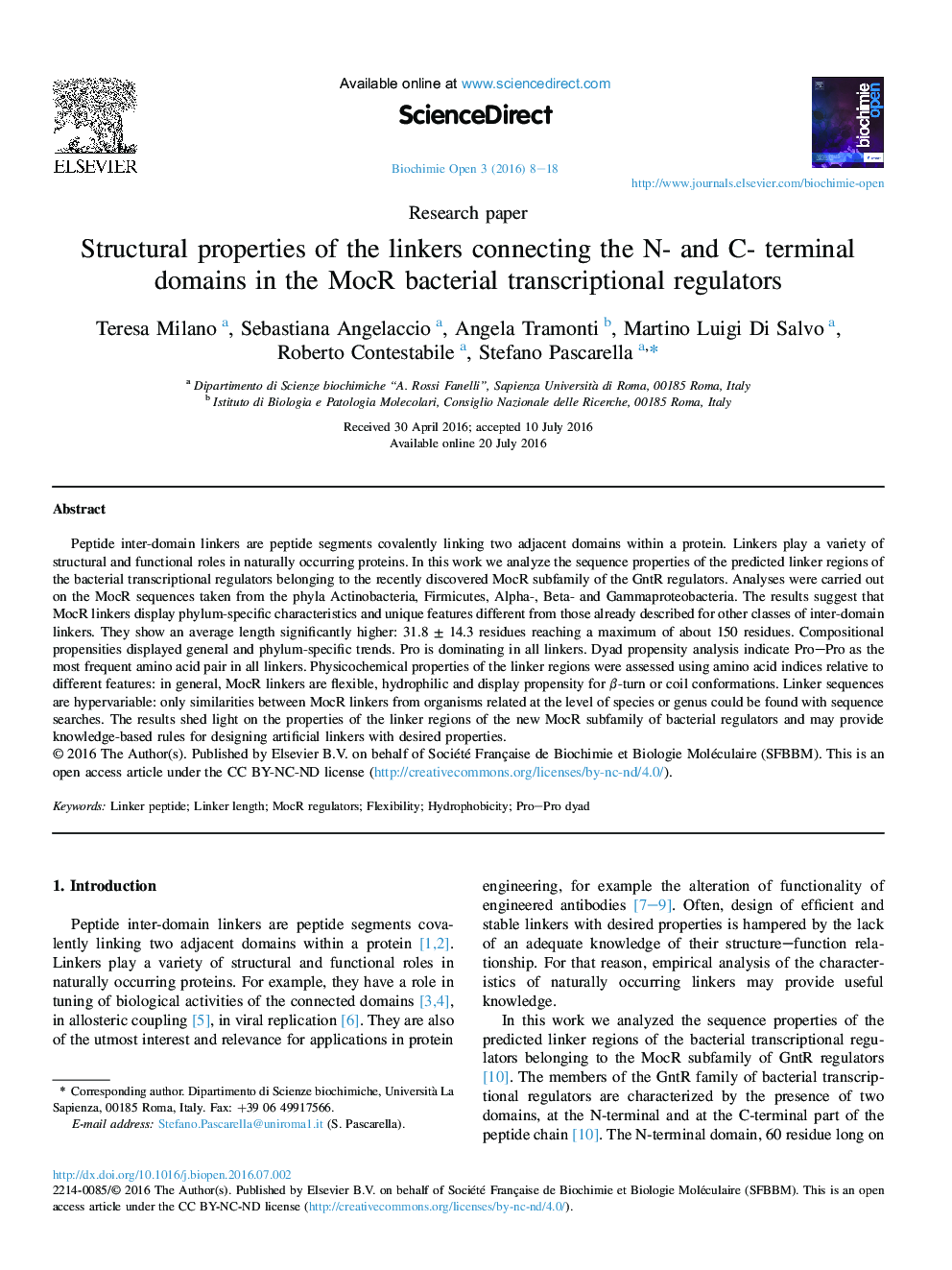| Article ID | Journal | Published Year | Pages | File Type |
|---|---|---|---|---|
| 1953592 | Biochimie Open | 2016 | 11 Pages |
•An overview of the structural properties of MocR inter-domain linkers is reported.•Linker length distribution is heterogeneous in different phyla.•Linkers are flexible, hydrophilic and have coil conformation propensity.•Pro and Pro–Pro dyads are very frequent in all the linkers.•MocR linkers display a few properties different from those reported for other linkers.
Peptide inter-domain linkers are peptide segments covalently linking two adjacent domains within a protein. Linkers play a variety of structural and functional roles in naturally occurring proteins. In this work we analyze the sequence properties of the predicted linker regions of the bacterial transcriptional regulators belonging to the recently discovered MocR subfamily of the GntR regulators. Analyses were carried out on the MocR sequences taken from the phyla Actinobacteria, Firmicutes, Alpha-, Beta- and Gammaproteobacteria. The results suggest that MocR linkers display phylum-specific characteristics and unique features different from those already described for other classes of inter-domain linkers. They show an average length significantly higher: 31.8 ± 14.3 residues reaching a maximum of about 150 residues. Compositional propensities displayed general and phylum-specific trends. Pro is dominating in all linkers. Dyad propensity analysis indicate Pro–Pro as the most frequent amino acid pair in all linkers. Physicochemical properties of the linker regions were assessed using amino acid indices relative to different features: in general, MocR linkers are flexible, hydrophilic and display propensity for β-turn or coil conformations. Linker sequences are hypervariable: only similarities between MocR linkers from organisms related at the level of species or genus could be found with sequence searches. The results shed light on the properties of the linker regions of the new MocR subfamily of bacterial regulators and may provide knowledge-based rules for designing artificial linkers with desired properties.
Graphical abstractFigure optionsDownload full-size imageDownload as PowerPoint slide
